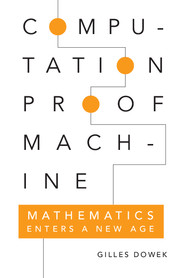Book contents
- Frontmatter
- Dedication
- Contents
- Introduction: In Which Mathematics Sets Out to Conquer New Territories
- PART ONE Ancient Origins
- 1 The Prehistory of Mathematics and the Greek Resolution
- 2 Two Thousand Years of Computation
- PART TWO The Age of Reason
- Part Three Crisis of the Axiomatic Method
- Conclusion: As We Near the End of This Mathematical Voyage …
- Biographical Landmarks
- Bibliography
- References
2 - Two Thousand Years of Computation
from PART ONE - Ancient Origins
Published online by Cambridge University Press: 05 May 2015
- Frontmatter
- Dedication
- Contents
- Introduction: In Which Mathematics Sets Out to Conquer New Territories
- PART ONE Ancient Origins
- 1 The Prehistory of Mathematics and the Greek Resolution
- 2 Two Thousand Years of Computation
- PART TWO The Age of Reason
- Part Three Crisis of the Axiomatic Method
- Conclusion: As We Near the End of This Mathematical Voyage …
- Biographical Landmarks
- Bibliography
- References
Summary
ONCE THE AXIOMATIC METHOD had been adopted, reasoning was often spoken of as the one and only tool available for solving mathematical problems. In the discourse they developed about their science, mathematicians hardly ever mentioned computation. This doesn't mean that computing vanished from the practice of mathematics, however. Mathematicians would regularly put forward new algorithms to systematically solve certain types of problems. It seems that the history of mathematics has a bright side – that of conjectures, theorems, and proofs – and a hidden one – that of algorithms.
This chapter will focus on three important points in this history, each set in a different time period, and each raising important issues.
First we will tackle the apparent contradiction between mathematical discourse, which tends to overlook computation, and mathematical practice, which places great weight on it. We will also retrace the transition between the prehistory of mathematics and Ancient Greek mathematics.
Next we will examine the relative parts played in medieval mathematics by the Mesopotamian legacy and by the Greek legacy.
Finally we will explore why so many new geometric figures (the catenary curve, the roulette curve, etc.) appeared in the seventeenth century, whereas ancient geometry focused on only a small number of figures (the triangle, the circle, the parabola, etc.).
EUCLID's ALGORITHM: REASONING-BASED COMPUTATION
Euclid linked his name not only to geometry and the axiomatic method but also, ironically, to an algorithm that allows the calculation of the greatest common divisor of two integers. It is known as Euclid's algorithm.
The first method for calculating the greatest common divisor of two numbers consists of listing the divisors of each number – successively dividing the number by all smaller numbers and writing down all those for which there is no remainder – and identifying the largest number that appears on both lists. For instance, in order to calculate the greatest common divisor of 90 and 21, we start by listing the divisors of 90 (1, 2, 3, 5, 6, 9, 10, 15, 18, 30, 45, and 90) and those of 21 (1, 3, 7, and 21).
- Type
- Chapter
- Information
- Computation, Proof, MachineMathematics Enters a New Age, pp. 15 - 28Publisher: Cambridge University PressPrint publication year: 2015



